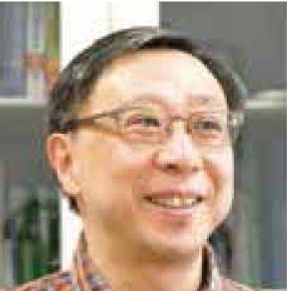Research - A02:Core Research Groups -
Click here for research plans of Selected Research Projects (2018-2019).
A02:Core Research Groups
Understanding mechanisms in the control of stem cell indeterminacy
| PI | Junko Kyozuka | Graduate School of Life Sciences, Tohoku University |  |
| CI | Kiminori Toyooka | RIKEN Center for Sustainable Resource Science |  |
Unlike animals, plants maintain pluripotent stem cells throughout their lives. The indeterminate nature of these cells is the basis of plant vitality, with some tree species living for several thousand years. When plant stem cells differentiate to become parts of a flower, however, they lose their indeterminacy. We study the control of stem cell indeterminacy, focusing on the relationship between stem cell proliferation and stem cell indeterminacy. We use single-cell transcriptome analysis and molecular genetics to identify stem cells in rice meristems. In addition, we perform live imaging of stem cells in bryophytes (mosses, hornworts and liverworts) to help us understand the origins and ancestral role of these amazing, self-renewing cells.
TBA
| PI | Keiko Torii |
Institute of Transformative Bio-Molecules, Nagoya University |
 |
| CI | Yuki Kondo | Graduate School of Science, Kobe University |  |
Mechanisms controlling maintenance and regeneration of pluripotent stem cells
| PI | Masaaki Umeda |
Graduate School of Science and Technology, Nara Institute of Science and Technology |
 |
| CI | Tomomi Tsubouchi | National Institute for Basic Biology |  |
| CI | Akiko Minoda | RIKEN Center for Integrative Medical Sciences |  |
In response to DNA damage, plant stem cells undergo cell death, while neighboring cells in the stem cell niche activate cell division and produce new stem cells. Umeda’s group found that phytohormones regulate stem cell regeneration and maintain genome integrity. In this study, we shall uncover molecular mechanisms for preserving plant stem cells over long periods of time. Similarly to plant stem cells, mammalian pluripotent stem cells also show strong sensitivity to DNA damaging reagents. Tsubouchi’s group aims to understand the underlying molecular mechanism that leads to such sensitivity and how it is linked to the mechanism that governs pluripotency.
Genetic diversity of stem cells and its contribution to plant longevity
| PI | Akiko Satake | Graduate School of Science, Kyushu University |  |
| CI | Yoshihisa Suyama |
Graduate School of Agricultural Science, Tohoku University |
 |
| CI | Naoki Tani | Japan International Research Center for Agricultural Sciences |  |
There are organisms that can live for hundreds or even thousands of years. What are the mechanisms underlying great longevity? Our goal is to examine the molecular mechanisms and evolution of longevity using cross-species comparative studies and mathematical modeling. Recent studies in animals are beginning to shed light on the molecular signatures associated with longevity. Yet, underlying mechanisms of long lifespan in plants, the oldest organisms on earth, remain poorly understood. Studying trees to address principles of longevity is advantageous because age-related genomic and epigenomic changes can be quantified over long-term and compared across species with different lifespans. Moreover, comparison of longevity-associated genes between plants and animals has the potential to reveal novel molecular players or pathways for lifespan regulation. We will quantify and model the process of age-related molecular changes in a variety of species and identify factors associated with lifespan regulation. Our study will provide novel insights into the general principles of lifespan control.
